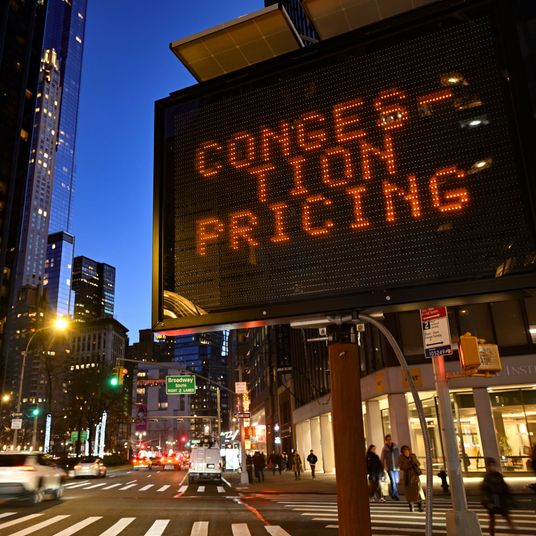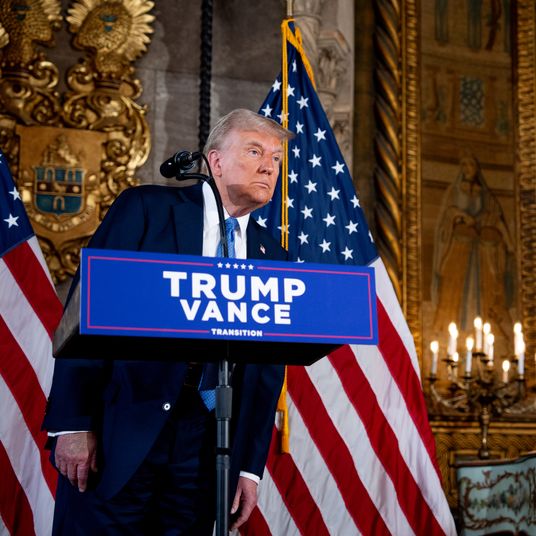
The official explanation for the recent service changes at the U.S. Postal Service is that they are the result of ongoing financial problems at the USPS that have been compounded by the effects of the COVID-19 pandemic. Falling quantities of paper mail — including an especially precipitous drop in junk-mail volume — may lead the Postal Service to decide it doesn’t need as many sorting machines as it used to. Operational changes that have delayed mail delivery — with mail carriers being instructed to leave mail unsorted and undelivered rather than accrue overtime hours — are intended to save labor costs. But with President Trump openly attacking the mail-in voting process, declaring that the USPS lacks the financial resources to deliver ballots en masse, and asserting and that he is unwilling to provide additional financial resources, voters and Democratic lawmakers are reasonably suspicious of the motivation behind the recent service changes at the Postal Service and the impact they could have on ballot-delivery times. So let’s take a look at the financial problems the U.S. Postal Service is currently facing.
Despite the various troubles it has faced during the COVID-19 crisis, the Postal Service actually reported a slightly smaller net loss in the quarter that ended June 30 than it did in the same quarter of 2019. That was because coronavirus-accelerated reductions in first-class mail and especially marketing mail (the official term for junk mail) volumes were offset by a sharp increase in package volumes, with more Americans staying home and shopping online. While the drop in mail volumes was stark (first-class down 8 percent from the previous year and junk mail down 36 percent) the surge in package volumes, up 50 percent, was even more dramatic.
All told, the Postal Service reported a loss of $2.2 billion on revenues of $17.6 billion in the quarter. That loss is partly — but not entirely — attributable to the post office’s obligations to put money aside for retiree benefits that were awarded to employees (but were not pre-funded) in the past. If you subtract approximately $900 million in costs to amortize those unfunded liabilities (costs that should really be attributed to the Postal Service’s past years of operation, not to this year), you are left with an adjusted net loss of about $1.3 billion for the quarter — or about 7 percent of revenues.
There are reasons to worry that the Postal Service’s losses may get worse. Businesses that have cut back their mail-marketing budgets or shifted to online marketing may not return to sending so much junk mail when the pandemic has waned. And the surge in parcel revenue that has offset the recent drop in the paper-mail revenue — shipping and package revenues rose even faster than package volumes, bringing in $8.3 billion in this spring compared to $5.4 billion last spring — may not persist. In recent years, companies like Amazon have launched their own delivery arms to help reduce their reliance on the USPS and on private delivery companies like UPS and FedEx. The surge in online orders during the pandemic forced many online retailers to rely on the Postal Service’s delivery capacity. But, in the long run, retailers like Amazon may decide to expand their own internal delivery infrastructures instead, taking market share away from the post office again.
Retailers will be especially likely to invest in alternative delivery methods if the Postal Service listens to President Trump, who has demanded that the USPS raise it’s rates for delivering packages — a demand that is perhaps shaped by the fact that Amazon’s founder, Jeff Bezos, also owns the Washington Post (a newspaper whose coverage has often annoyed the president). The president tweeted this week that companies like Amazon should be charged “much more” for package delivery and that those companies should not pass the increased cost of doing business onto their customers (which is not how markets work). In fact, higher shipping prices for Amazon would likely result in a combination of lower profits, higher consumer prices, and a lower volume of packages at the post office. It is unclear what, if anything, this would do to help the Postal Service’s finances.
One option for addressing the financial problems at the Postal Service would be simply to have taxpayers subsidize the losses. A post office that loses a few billion dollars a year is affordable for a country with a GDP of $20 trillion. The concept that the Postal Service should be financially self-supporting has always been somewhat arbitrary. Not only is the USPS not a business, it is not treated in the law like a business. It has certain money-losing service obligations imposed on it for considered policy reasons. Most importantly, the USPS is required to deliver first-class mail at a fixed price across the whole country — even in places where delivery costs per piece are relatively high. It also enjoys a monopoly in the first-class and junk-mail markets, which allows it to charge higher prices and earn greater profits than it might otherwise be able to. For a long time, the financial advantage of this monopoly was sufficient to finance the USPS’s service obligations without requiring external subsidy. Even if that is no longer the case, that doesn’t necessarily mean the policy justification for the money-losing service has gone away. In the old system, USPS customers effectively financed the money-losing services by paying more for mail delivery than they might have paid in a traditional competitive market. Going forward, it may be necessary to have taxpayers finance these services through government subsidies.
At the same time, a postal subsidy should be carefully considered. The president has urged the Postal Service to raise prices on its competitive products. But if the USPS raises package-delivery prices, it faces the prospect of losing business to UPS and FedEx and of companies like Amazon handling more of their own package delivery. In the past, postal officials have said higher package prices would mean less profit, not more. One possibility for policymakers to consider is that the Postal Service could stem some of its financial losses if it were allowed to raise prices more aggressively on its monopoly products — including first-class mail and marketing mail — where it does not face so much competition.
The erosion of public trust in the Postal Service may also present a barrier to the implementation of necessary and meaningful operational changes. I don’t know, for instance, if the number of sorting machines removed from post offices was appropriately scaled to the decline in mail volume. I think the organization’s decision to suspend further changes until after the election is a good one, in light of public concern. (Although it appears that most of the sorting-machine removals had already been completed before the announcement, making the announcement less than reassuring.) In the long run, less paper mail is a good thing for the economy and the environment, and if the Postal Service is not allowed to adjust its operations and assets to reflect the new reality of the services it is providing (less mail, more packages), then the financial losses at the service may be greater than are actually needed to serve its social mission. For that reason, it is especially important that the next president make postal appointments who demonstrate that they see the organization as neither a business nor a political entity but a service aimed at fulfilling a specific mission at the best possible cost.





























